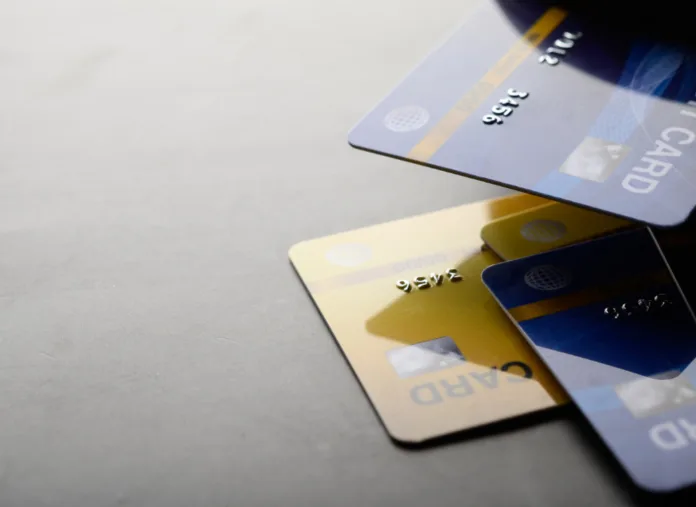Rising consumer demand for flexible payments drives Saudi credit card debt to a historic high, reflecting the Kingdom’s rapid shift towards a digital economy
Saudi credit card surge reached a record SR30.27 billion ($8.07 billion) in Q3 2024, reflecting the nation’s shifting financial habits. According to the Saudi Central Bank (SAMA), this 14.24% year-on-year increase underscores Saudi consumers’ growing reliance on credit cards for daily expenses. This trend, coupled with Vision 2030’s push toward a cashless economy, highlights the Kingdom’s swift digital transformation.
SAMA’s latest data also reveals a 4.01 per cent rise in total consumer loans, reaching SR462.29 billion. While education lending posted the strongest growth rate, up by 16 per cent to SR8.24 billion, loans for vehicle and private transportation remained the largest sector within consumer finance, hitting SR11.93 billion. Remarkably, a substantial 91 per cent of consumer loans fell into a broad “Others” category, underlining the diversity of Saudi consumers’ financial needs.
Drivers of Saudi Credit Card Boom
This significant rise in credit card lending stems from several interconnected factors. For one, Saudi Arabia’s digitisation push has transformed banking access, especially for younger customers who favour online banking and instant access to credit. This demographic shift has combined with increased consumer spending, bolstered by Saudi government programmes aimed at boosting economic activity and diversifying the nation’s financial services. Together, these forces are reshaping Saudi consumer habits, with credit cards now forming a crucial part of everyday transactions.
Credit cards have become increasingly appealing to Saudis, thanks in part to attractive incentives such as cashback deals and loyalty schemes, which reward regular use. The rise of e-commerce has also propelled credit card adoption, as consumers seek convenient payment options to match their online shopping needs. Reflecting these trends, Saudi Arabia is seeing a marked shift in payment habits, where cash is increasingly being left behind in favour of digital alternatives.
The Shift from Cash to Digital Payments
As evidence of this shift, SAMA’s data shows a year-on-year reduction of 604 ATMs across the country, with total ATMs now numbering 15,448. Conversely, the number of issued bank cards has surged by 3.6 million, reaching nearly 50 million. This divergence between a shrinking reliance on physical cash and rising card issuance signals Saudi Arabia’s move toward a predominantly cashless society.
Andrew Torre, Visa’s regional president, recently pointed out that Saudi Arabia’s adoption of contactless payments has soared, reaching 98 per cent for in-person transactions. This marks an incredible leap from just 4 per cent in 2017. Torre credits the transformation to strong governmental support, consumer interest, and Visa’s technological efforts in the region, all in line with Saudi Vision 2030’s ambitions for a fully digital commerce sector. The shift to contactless transactions—such as tap-to-pay on mobiles—has accelerated at one of the fastest paces globally, underscoring Saudi Arabia’s pioneering role in fintech development.
A fintech-friendly regulatory environment has significantly helped drive this change. SAMA’s introduction of a fintech sandbox has opened doors for innovations in financial services, particularly in digital payments. Meanwhile, the e-commerce sector has experienced explosive growth, expanding at a rate of 30 per cent annually, partly as a result of the pandemic, which encouraged consumers to shift towards online shopping.
This digital payment adoption has proven transformative not only for consumers but also for small businesses. Secure, cashless transactions offer SMEs a reliable way to process payments, catering to a population increasingly looking to pay with cards and contactless options rather than cash.
Looking Ahead: Saudi Arabia’s Digital Economy
Projections suggest that Saudi Arabia’s payment card market will reach a transaction value of $146.8 billion by the end of 2024. According to research by GlobalData, this market is expected to grow at a compound annual rate of over 6 per cent between 2024 and 2028. These figures point to an upward trajectory for credit card usage in the Kingdom, even as it remains a smaller component of total consumer debt relative to other loans.
This growth comes as Saudi consumers navigate a new economic landscape with greater access to digital finance tools. Whether buying a vehicle, investing in education, or simply meeting daily expenses, Saudis are increasingly turning to digital solutions. For the nation as a whole, this trend reflects a broader cultural shift as Vision 2030 drives Saudi Arabia toward a fully digitised, cashless society.
As Saudi Arabia’s payment landscape continues to evolve, so too does the need for tailored financial products. For lenders, this means designing flexible, accessible credit solutions that meet consumers’ shifting preferences. For the government, fostering a secure and innovative financial ecosystem is essential to supporting Vision 2030’s vision of a vibrant, digital-first economy. The surge in credit card loans, coupled with a strong digital payments infrastructure, highlights Saudi Arabia’s commitment to staying at the forefront of financial modernisation.
